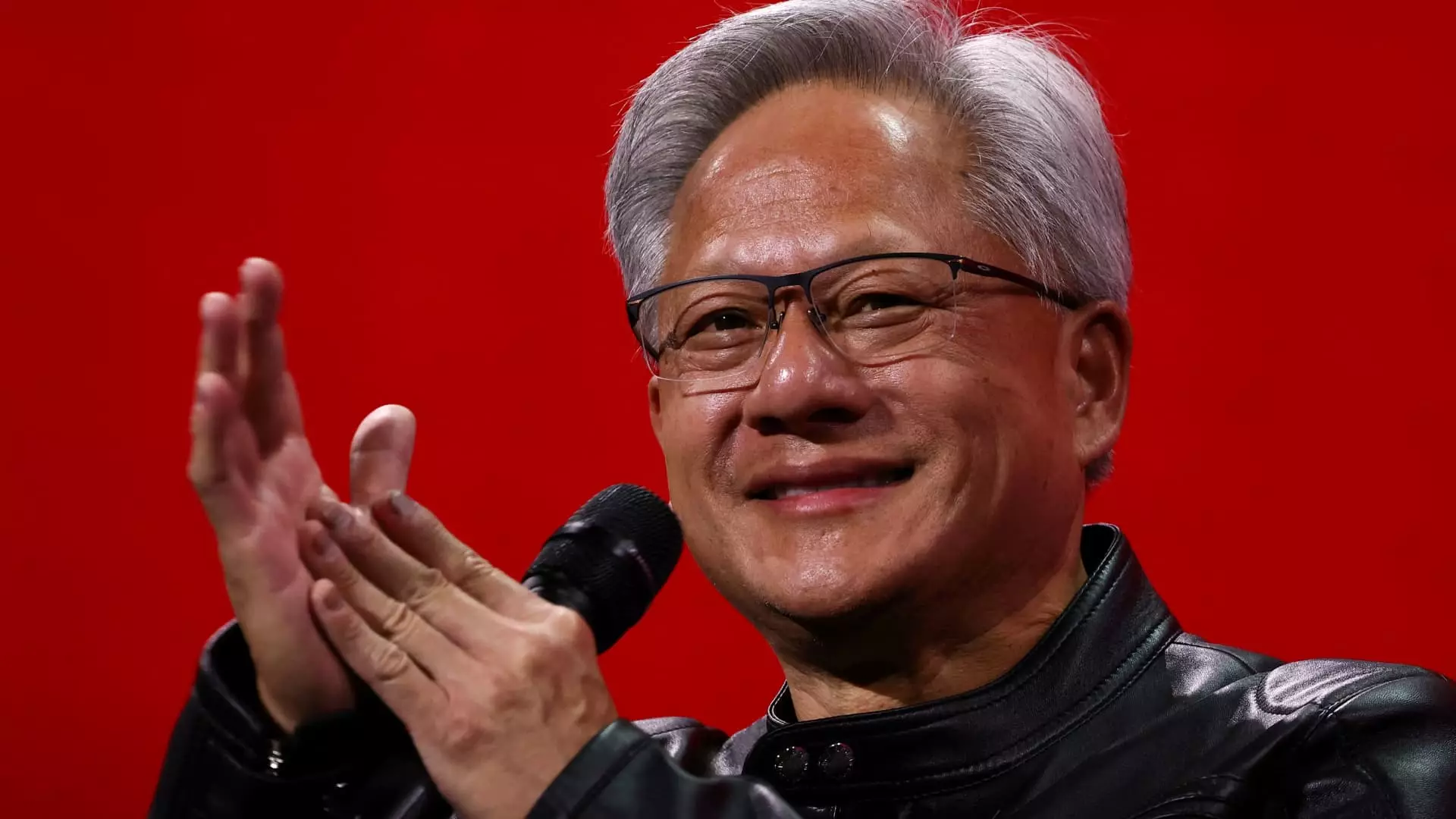In a landscape dominated by Western tech giants, China has quietly emerged as a formidable force in artificial intelligence innovation. The praise from Nvidia CEO Jensen Huang underscores a significant shift: Chinese AI models such as DeepSeek, Baidu Ernie, and Tencent’s offerings are not only competitive but are influencing the global AI development trajectory. This is a testament to China’s proactive approach—building an extensive ecosystem of domestic talent and fostering open-source principles—that is enabling rapid advancements despite external restrictions.
With more than 1.5 million developers harnessing Nvidia’s technology in China, the country’s AI community demonstrates resilience and ingenuity. Even amidst U.S.-imposed limitations, Chinese companies have managed to engineer models that challenge global players like OpenAI on cost and efficiency. DeepSeek’s breakthrough in January, which defied development cost norms and surprised international investors, exemplifies China’s strategic grasp of AI development. The question remains: how did China achieve such prowess when access to cutting-edge chips has been constrained?
Resilience Through Open-Source Collaboration
One of the most compelling narratives emerging from China’s AI scene is its open-source approach. Unlike many Western counterparts, which often prioritize proprietary technology, Chinese companies like Alibaba-backed Moonshot have launched models like Kimi K2, openly sharing code that rivals or surpasses international benchmarks. Huang’s praise for this open-source culture reflects an understanding that democratization of AI tools accelerates innovation, safety, and global cooperation.
Open-source AI offers a double-edged advantage. It allows a broader spectrum of developers to participate in AI evolution and fosters transparency—crucial for safety and ethical standards. Moreover, by sharing code freely, Chinese companies are breaking down barriers that traditionally limited global access, empowering developers worldwide and stimulating competitive progress across industries.
This openness is reshaping the geopolitical narrative of AI leadership. It challenges the paradigm that technological dominance is solely the result of proprietary advantage. Instead, China’s model demonstrates that open collaboration, coupled with strategic development, can compete with, if not surpass, the traditional American dominance.
Strategic Geopolitics and Technological Competition
U.S.-China tensions over advanced semiconductors and AI chips frame much of the ongoing narrative. The export restrictions imposed by the U.S. aim to curb China’s military and technological advancements, but they ironically may catalyze indigenous innovation as China adapts quickly to restrictions. Huang’s assertion that Huawei and other Chinese firms stand to benefit from export curbs reveals a strategic shift: restrictions may spurr self-sufficiency rather than stagnation.
Furthermore, the U.S.’s partial easing of high-tech export controls indicates an acknowledgment that China’s ascendancy in AI cannot be contained through restrictions alone. Chinese companies’ ability to develop and deploy AI models internally, even with limited access to the latest chips, demonstrates a resilient strategic calculus. Their rapid pace underscores a critical insight: restricting access to technology fuels ingenuity rather than suppression.
As the geopolitical chess game intensifies, China’s open-source ecosystem and domestic innovation may emerge as the key drivers of AI leadership. The global AI race is no longer just about hardware or algorithms—it’s increasingly about strategic resilience, innovation ecosystems, and collaborative approaches that transcend traditional barriers.
Implications for Global AI Leadership
The narrative that China is quietly consolidating AI leadership is far more complex than mere technological advancements. It revolves around the democratization of AI development principles, particularly open-source collaboration, which counters the narrative of monopolistic technological control. Huang’s endorsement of open AI models and their role in fostering global progress signifies a potential paradigm shift—one where shared knowledge and accessibility become cornerstones for a healthier, more inclusive AI ecosystem.
This shift also raises profound questions about the future of international cooperation. Will open-source AI models dilute national efforts, or will they serve as a unifying force in establishing shared standards and safety protocols? China’s approach suggests a future where open collaboration complements national strategies, creating a hybrid model capable of sustaining innovation across geopolitical boundaries.
Ultimately, the success of this model depends on balancing open access with robust safety standards, which remains a challenge. However, Huang’s optimistic outlook and China’s rapid development show that the global AI landscape is evolving toward increasingly decentralized and collaborative innovation. China’s strategic emphasis on open-source AI not only boosts its own technological standing but could redefine the foundation of international AI progress—making the field more accessible, competitive, and ethically accountable.

